![Denyer, Frank: Melodies [2 CDs] (Another Timbre) Denyer, Frank: Melodies [2 CDs] (Another Timbre)](https://www.teuthida.com/productImages/misc4/33015.jpg)
First recordings of composer Frank Denyer's "Melodies" series from the mid-1970s, arising from his ethnomusicological studies that explored the concept of what makes up a melody, or a note, creating a series of compositions with melodies of one note, then two, building up to a final work of 14- and 15-note melodies; includes a 24 page booklet by Denyer detailing the concept.
Out of Stock
Quantity in Basket: None
Log In to use our Wish List
Shipping Weight: 5.00 units
Sample The Album:
Frank Denyer-composer, voice
Joz Zwaanenburg-bamboo flute, c flute with membrane, baritone traverso
Stefan Blonk-horn
Orlando Velazquez-stones, percussion, steel plates, bell
Elisabeth Smalt-voice, sneh, viola, box
Pepe Garcia-bamboo switch, drum, Santur, percussion, box, tenor drum, cimbalom
Natalia Alveraz-Arenas-high drum, guiro
Dario Calderone-double bass
Pietro Elia Barcellona-double bass
Nestor Martinez Jara-tuba
Alfrun Schmid-voice, box
Janneke van Prooijen-violin
Alistar Sung-cello
Click an artist name above to see in-stock items for that artist.
Label: Another Timbre
Catalog ID: at203x2
Squidco Product Code: 33015
Format: 2 CDs
Condition: New
Released: 2023
Country: UK
Packaging: Cardboard Gatefold 3 Panels in cardboard sleeve w/ 24 page booklet
CD 1 tracks 1-4, 6-7 and 9-18 recorded at Studio 150, in Amsterdam the Netherlands, on June 2nd and 3rd, August 27th, October 19th, November 19th and 20th, and March 15th, 2021, by Joeri Saal.
CD 1 tracks 5, 8 an 12 recorded at The Cabin Recording Studio, in Walthamstow, London, UK, on December 19th, 2010, by Rupert Gillet.
Track 1 on CD2 recorded at Baptist Church Hampstead, in London, UK, on December 15th, 2020, by John-Henry Baker.
"First recording of a fascinating project from the mid-1970's, arising from Frank Denyer ethno-musicological studies from that time in India, Kenya and Japan, which forced him to question the fundamentals of music, asking 'what is a melody?' and 'what is a note?'
Denyer decidied to answer these questions by composing a series of 25 short pieces, starting with melodies for a single note, then melodies for 2, 3, 4, 5 and 6 notes, ending with more complex melodies for fourteen and fifteen notes.
Performed by Scordatura Ensemble, the Luna String Quartet, Mad Song and Frank Denyer himself, on two CDs, accompanied by a 24-page booklet specially written by Denyer."-Another Timbre
Introduction to the 24-page booklet by Frank Denyer that accompanies the double CD
"It is now more than half a century since I first became interested in forms of traditional music made from just two, three or four notes. These restrictive forms were the particular concern of comparative musicologists in the first half of the twentieth century, who were fascinated not only by societies whose musical life had seemingly evolved entirely within these bounds, but also with the significance that such forms existed, and still exist, on every continent and in every age. This wide geographical distribution would indicate very early, probably archaic, origins. Such forms might therefore be considered an archetypal part of our common musical heritage, under-pinning all musical cultures. Such a hypothesis is reinforced by their appearance as part of every infant's earliest vocalisations and also in their presence in the oldest chanting traditions of the world's great religions.
When thinking about these seemingly simple structures, I soon found myself reconsidering some fundamental musical concepts that seemed surprisingly relevant to contemporary composition. First and foremost was the question - "what exactly is a note?" Is it the same as a particular pitch or frequency? Up to that point I had assumed that these were almost synonymous and certainly none of my composition teachers had ever suggested otherwise, but now I was gradually realising that a note was not at all the same as a discrete frequency, for even within the formal world of western classical music slight changes in intonation in response to particular harmonic (or melodic) contexts are normal practice. These might be extremely small, but nevertheless a note becomes a narrow flexible band of frequencies rather than a single fixed point. Beyond the world of western classical music, particularly in music with fewer notes in its gamut, such pitch tolerance can have more latitude. Intonation in western classical music can only be modified to a very limited degree because an octave packed with twelve semitones leaves little room for manoeuvre. A note that is too variable in pitch soon becomes confused with its near neighbour and to prevent this, a distinct no-man's land is placed between each, which, if ventured upon, is experienced as being 'out of tune'. But there is little danger of this in a two-note system where one note might take its identity merely from being higher or lower than its companion.
Long before I could personally experience any of the more sophisticated examples from around the world, I was scouring libraries of recorded sound at home, slowly accumulating what became a sizeable collection. Having roots deep in our prehistory does not mean that every example originated long ago, for such structures are still being created today, and not only by hunter-gatherer or other roaming groups. They are to be found in contemporary contexts in the industrialised world such as the vocal parts of some commercial pop music for instance. Being fundamental to our musical experience and history, they are surely worthy of more than a passing glance from aspiring composers.
At some point in 1973 I decided that I would better understand the implications and potential of these observations if I composed a small two-note melody myself. At first I had no thought of it being more than a sort of learning exercise. However, I soon found that this small task was more difficult than anticipated, and the questions it posed too great for me to deal with. I was certainly nowhere near ready to take on the further problems when pitch interacted with metre, rhythm, dynamics or timbre. Obviously I would have to start with something simpler - a one-note melody.
But another fundamental question immediately arose. "When is a change of pitch perceived as a new note, and under what circumstances might it appear as just a variant of the same one?" This is more complex than it seems. At the simplest level, a note with a trill is easily perceived as having the same basic identity as a notewithout a trill. It is the same with other ornaments: even if a portamento or glissando is attached to the beginning or end, it will probably still be heard as the same note even if the frequency change has been considerable. These are simple musical examples, but real musical discourse is altogether a different thing, where interesting ambiguities can arise and a change of pitch can be perceived as either a new note or the same, or both. Musical perception depends a lot on context.
It began to dawn on me that a note could be individually characterised by the width and nature of its pitch band, and through that microstructure become endowed with a special identity. Looking forward, it seemed that if I slowly proceeded down this path I might eventually be able to extend these ideas to systems of five, six or even more notes and, who knows, this might then evolve into a novel self-sustaining melodic language. But wait! At this stage I was having trouble with one- and two-note structures, so this was merely an idle fantasy, and, of course, I had no idea what such a music might sound like.
And so this simple exercise began its slow transformation into an idea for an extended composition, one that would enable the listener to experience this birth of melody, albeit within the course of a single work. As time went by I gradually came to feel more at home with these concepts, but it still took three years (1974 to 1977) for Melodies to fully emerge."
Artist Biographies
• Show Bio for Frank Denyer "Frank Denyer is an English composer whose brilliantly coloured and imaginatively rich compositions fall between several and into none of the accepted categories of contemporary music. Born in London in 1943, he was a chorister at Canterbury Cathedral by the age of nine, the director of the experimental music ensemble Mouth of Hermes in London at the age of twenty-five, and a Doctoral student in ethnomusicology at Wesleyan University, Connecticut at the age of thirty. He has lived and worked in east Africa and India. Denyer's music is distinguished by a keen sensitivity to sound. Each of his works is written for a unique combination of instruments, more often than not a combination that no composer has dreamed of before. Each work finds its own individual form, laying down the path for its journey as it proceeds. In some cases even such basic musical materials as the scales and the tuning system are invented from scratch.This music is handmade in every detail; it is engaged in a complex process of affirmation and negation, accepting no easy solutions. For Denyer, a fine pianist who has composed not one note for his own instrument since his student days, the whole question of musical instruments is a central one. His compositions present an astonishingly varied array of sound sources - new instruments of his own invention, adapted instruments, instruments of non Western traditions, rare or virtually extinct instruments, and conventional Western instruments. This whole concern with what his friend Morton Feldman called 'the instrumental factor' is not a postmodern mixing-and-matching of instruments from different 'ethnic' traditions: rather, his work suggests that all instruments bear the imprint of the tradition of which they are a part, whether that tradition be nascent, mature or decaying, and that at the beginning of the twenty-first century we cannot afford to be complacent about which musical traditions we consider to be 'ours.' Neither is his music that of a composer making do with ready-mades or whatever lies to hand (like Cage's percussion ensemble works of the 1930s and early 1940s). Nor, at the other extreme, does one have the sense of the composer gradually assembling an instrumentarium of his own, creating the illusion of an alternative musical universe (like Harry Partch): for one thing, Denyer's assembly of new instruments hardly ever plays together; for another, they rarely recur from one work to the next - each new composition wipes the slate clean and starts afresh. The instruments are like flowers that suddenly spring up between the cracks in a wall; they seem to be there because the opportunity has arisen for them to exist, to fill the gaps between isolated islands of instrumental sound. Denyer's concern with musical instruments can also be seen as a metaphor for the larger question of what can be salvaged, artistically, from the chaos of civilization as we begin our new century. Compositions like A Monkey's Paw (1987-88) and Finding Refuge in the Remains (1992) confront this central issue - the sense of new life emerging from a morass of dead or decaying matter - an urgent issue for him both compositionally and culturally." ^ Hide Bio for Frank Denyer • Show Bio for Joz Zwaanenburg "Jos Zwaanenburg (1958) studied at the Sweelinck Conservatory in Amsterdam, flute with Joost Tromp, composition with Wim de Ruiter, and finished his studies with distinction in 1985. He was one of the prize winners of the International Gaudeamus Interpreters Competition 1984. He gave numerous solo concerts in Europe, USA, South-America (solo-recitals, as soloist with various orchestras and as member of different chamber music ensembles like the Barton Workshop, the Gaudeamus Solisten Ensemble, the Xenakis Ensemble, the Cornelius Cardew Ensemble and The Interval Chamber) and made radio and TV recordings. Although he concentrates on present-day music, his repertoire contains works from all style periods. He teaches at the Amsterdam School of Arts and the Music Department of University College Bretton Hall (Leeds, G.B.), where he is also artistic leader of their ensemble in residence The Cornelius Cardew Ensemble. Furthermore he is guest teacher at the University of Oxford Brookes. His compositions were published by Donemus and Ascolta Music Holland. A selection of compositions by Jos Zwaanenburg: Solo for prepared flute (1984), Texts for nothing (4 electronic flutes and tape) (1985), Paraphrasen über Grass (4 acting singers) (1986), Sol (concert for open-hole alto flute and ensemble) (1987), à Aphonie (organ) (1990), May be tomorrow (tenor saxophone) (1990), Manamanamania II (open-hole alto flute and life electronics) (1991).As far as the flute is concerned, the greatest number of playing possibilities is achieved on an "open-key" flute with a "B foot joint". Until now this system was only available on the normal C-flute. Hence the idea for the alto flute - which previously had a covered key system - by giving it similar keywork to the open-key flute, the possibilities became the same as the C-flute. The new alto flute was realised in 1986 by Kuiper-Kingma, flutemaker in Nederhorst den Berg, the Netherlands. Due to this system with keys with small holes, extra keys, and new playing techniques, the alto flute has become a very flexible instrument, possible of creating many tones. The new alto flute has about 192,000 fingering combinations - a dramatic improvement to the 8000 on the old alto flute. The "Zwaanenburg" model alto flute also is in production by Kuiper-Kingma. The alto flute project was made possible due to the support of the Ministerie van WVC/Raad voor de Kunst, The Amsterdam Fonds voor de Kunst, and Foundation Gaudeamus. Special thanks to Dirk Kuiper, Eva Kingma and Henk Heuvelmans. He composed Cherubs' Chirrup in 1992 by request of Joop van Goozen. The work is composed specifically for 31-tone organ, the aforementioned open-key alto flute (which can faithfully reproduce a 31-tone scale) and live-electronics. It's on the CD 50 jaar Stichting Huygens-Fokker. The 31-tone system is approximated here as an equal tempered scale wherein all 31 tones in the octave are equally important: no tonal principles are used. Zwaanenburg succeeded Marian Van Dijk in 1998 as director of the Stichting Huygens-Fokker and fulfilled this job until September 2000 after which Ned McGowan became director. He currently teaches at the Conservatory of Amsterdam in "Contemporary Music Through Non-Western Techniques", "Advanced Rhythm" and "Live Electronics". Zwaanenburg is also guest lecturer at the music departments of the University of York and Oxford Brookes University." ^ Hide Bio for Joz Zwaanenburg • Show Bio for Stefan Blonk "I started my first horn lessons with Ab Koster in The Hague Holland and studied at the royal conservatory with Piet Schijf. Followed by a few years with Hermann Baumann in Essen, Germany. Already during his studies I combined playing the modern valve horn with the natural horn. This combination I continued in my professional live, playing as first horn with the Arnhem Philharmonic and with the orchestra of the 18th century. Since 2013 I became free lance. In this way I'm able to play more on old horns. I play in many different orchestras and groups in Europe. The Orchestra of the eighteenth century, Apollo ensemble and the Haydn Philharmonie are my regular groups. I've always been rather keen on playing as a soloist and chamber musician. Played many times as soloist with the Arnhem Philharmonic. Now I play a horn and harp programm and a trio programm with violin and piano. With Riko Fukuda, piano and Franc Polman, violin we recorded the Brahms horn trio. I teach at the conservatory of Zwolle (Artez school of the arts). Gave masterclasses in Brazil, Spain and Belgium and at the Amsterdam conservatory. Besides I buy and sell old horns, like to write short stories and run trails." ^ Hide Bio for Stefan Blonk • Show Bio for Elisabeth Smalt Elisabeth Smalt is a Modern Classical living in Amsterdam, Noord-Holland, Netherlands. She is a member of The Barton Workshop, Musica ad Rhenum, Nepomuk Fortepiano Quintet, Oxalys, Trio Scordatura, and Zephyr Quartet. ^ Hide Bio for Elisabeth Smalt • Show Bio for Pepe Garcia "Pepe Garcia: Sound researcher, music creator. Percussion teacher @Royal Conservatoire The Hague. Artistic coordinator @slagwerkdenhaag www.slagwerkdenhaag.nl" ^ Hide Bio for Pepe Garcia • Show Bio for Natalia Alveraz-Arenas "Natalia Alvarez-Arenas (1986 Spain) She is a classical percussionist, performer and educator. She has been playing percussion since She was 7 years old. She studied at the Royal Conservatory of Atocha in Madrid where She got her double bachelor degree in Percussion and Percussion Pedagogi in 2009. In 2013 and 2015 She also finished her bachelor and Master percussion degree at the Royal Conservatory of Den Haag with Fedor Teunisse, Pepe Garcia and Luuk Nagtegaal. All through her career she has played and collaborate in different orchestras, ensembles and musical organizations as Ludwig, Residentie Orquestra, Diamant Fabrike, Dag in de Branding, Asko Schönberg, Slagwerk Den Haag and New European Ensemble. She was one of the leaders of Davai percussion Ensemble when they won the first prize of the Grachtenfestival in 2013. Now She is a member of On:Time percussion, JongNBE, Ta-Ta-Tone theatrical ensemble and Catchpenny ensemble. Also She runs her own academy of music and movement for children in Den Haag, She works as a teacher with children with Autism. She is leading and guiding workshops of music introduction and percussion and She is collaborating with Ludwig in Music and Dementie and with the NAIP Master (New Audiences and Innovative Practice) in Holland." ^ Hide Bio for Natalia Alveraz-Arenas • Show Bio for Dario Calderone "Dario Calderone studied Doublebass with Massimo Giorgi, Franco Petracchi and Stefano Scodanibbio. Between 2001 and 2007 collaborated as solo Doublebass in various orchestras. Since 2007 dedicates mainly to the diffusion of music composed during the last 40 years. He has collaborated with a number of composers , among others Salvatore Sciarrino, Bernhard Lang, Louis Andriessen, Robert Ashley, Christian Marclay and Yannis Kyriakides, inspiring them in the composition of their works. His activity spaces from solo performances to chamber music, having been regularly invited by the major contemporary musical festivals. He plays with Nieuw Ensemble, NAP, Atlas Ensemble and Ensemble Algoritmo; in 2013 he funded together with Yannis Kyriakides, Ann La Berge, Wiek Hijmans, Gareth Davis and Reinier Van Hout the ensemble MAZE, a group deeply involved in radical experimentations in the field of conceptual composition. He regularly gives masterclasses at the Tashkent conservatory and at the Amsterdam Conservatory. In 2002 wins the first price at W. Benzi solo doblebass competition, and in 2006 wins the stipendium price of the IMD of Darmstadt. He recorded a number of CDs for Stradivarius, Attaca records, Wergo and Unsounds. In 2015 will be tutor in the "impuls Academy" in Graz." ^ Hide Bio for Dario Calderone • Show Bio for Pietro Elia Barcellona "Pietro Elia Barcellona is an Italian contrabassist, composer and improviser currently based in the Netherlands, where he is active in the fields of experimental music involving both improvising and performing written material. In the field of new music, Pietro has premiered works of composers such as Frank Denyer, collaborating with Amsterdam-based Ensemble Scordatura, and Robin Engel as first double bass of the Junger Künstler Bayreuth Orchestra; as well as performing in festivals such as Gaudeamus, Amsterdam Viola Festival and Doek Festival. Pietro has also played as a soloist for Sebastian Gramss' BasseMasse Sizilien Orchestra as part of Curva Minore in Palermo. Pietro has studied with teachers such Dario Calderone and Ernst Glerum and his repertoire includes composers such as Giacinto Scelsi, Stefano Scodanibbio, Salvatore Sciarrino. Pietro has also received lessons in contemporary chamber music from Helen Hulst and Nick Sterling, members of Nieuw Amsterdams Peil. As an improviser Pietro has performed with numerous formations. He is co-leader of Fade in Trio, an ensemble focused on exploring ways of mixing Carnatic rhythms, free improvisation and unconventional techniques. The trio was among the winners of "Tomorrow's Jazz Prize" in Venice in 2021. Pietro is also a member of Moving Air Ensemble, an immersive project involving a kinetic sound installation combined with an acoustic ensemble. Furthermore, he is a member of Stab Freeze Collective (a sound painting ensemble), All Strings (an improvised music series of only string instruments players). As a composer Pietro is interested in exploring the boundaries of composition and improvisation as well as the relationship between musical gesture and rhythm. Pietro is founder and co-leader of Ensemble Mellonta, a collective devoted to the performance of contemporary music and new compositions for which he also composes." ^ Hide Bio for Pietro Elia Barcellona • Show Bio for Nestor Martinez Jara "Néstor Martínez Jara, a tuba student of Professor David Muñoz, who last year finished 6th in Professional Education in Gijón, has won the Extraordinary Award for Artistic Education convened by the Asturias Ministry of Education. It's great news that will help you continue his musical path. Currently, Néstor continues his studies at the Conservatory of Music of the Principality of Asturias with Professor Alfonso Mollá." ^ Hide Bio for Nestor Martinez Jara • Show Bio for Alfrun Schmid "Alfrun Schmid Vocalist born in Germany. She studied with Anne Haenen at the Conservatory in Enschede, the Netherlands, and continued studies with Charles van Tassel and Cora Canne Meijer at the Conservatory of Amsterdam." ^ Hide Bio for Alfrun Schmid • Show Bio for Janneke van Prooijen Janneke van Prooijen: concert violinist at Prisma String Trio, Atlantic Piano Trio, Lunapark. ^ Hide Bio for Janneke van Prooijen • Show Bio for Alistar Sung "I'm a classically trained cellist with an interest in linking the old and the new and more than a decade of experience performing music in a variety of styles to different audiences around the world. Currently based in Amsterdam, I develop both solo and collaborative performances and projects aimed at casting a new light on the classical repertoire. I also regularly team up with like-minded people on projects at the intersection of classical and contemporary music. Beside my solo projects, I also work with the Cello Octet Amsterdam, orchestral collective s t a r g a z e as well as pianist and composer Chad Lawson. From solo concerts and chamber music to orchestral performances, tours with internationally acclaimed bands, festivals and the BBC Proms, I've got a diverse background and am a versatile musician who's always on the look out for new challenges. Let me know if you'd like to work together - I bring my strong work ethic and sense of humour to every project, along with excellent qualifications in the form of a Bachelor Music (Hons 1 and University Medal)/ Bachelor Arts (Philosophy) as well as two master's degrees (Musikhögskolan i Malmö, Koninklijk Conservatorium Den Haag)." ^ Hide Bio for Alistar Sung
12/17/2025
Have a better biography or biography source? Please Contact Us so that we can update this biography.
12/17/2025
Have a better biography or biography source? Please Contact Us so that we can update this biography.
12/17/2025
Have a better biography or biography source? Please Contact Us so that we can update this biography.
12/17/2025
Have a better biography or biography source? Please Contact Us so that we can update this biography.
12/17/2025
Have a better biography or biography source? Please Contact Us so that we can update this biography.
12/17/2025
Have a better biography or biography source? Please Contact Us so that we can update this biography.
12/17/2025
Have a better biography or biography source? Please Contact Us so that we can update this biography.
12/17/2025
Have a better biography or biography source? Please Contact Us so that we can update this biography.
12/17/2025
Have a better biography or biography source? Please Contact Us so that we can update this biography.
12/17/2025
Have a better biography or biography source? Please Contact Us so that we can update this biography.
12/17/2025
Have a better biography or biography source? Please Contact Us so that we can update this biography.
12/17/2025
Have a better biography or biography source? Please Contact Us so that we can update this biography.
Track Listing:
CD1
1. 1-Note Melody Karnatic Bansuri (Bamboo Flute) (1:29)
2. 1-Note Melody French Horn, Stones (2:23)
3. 1-Note Melody Prepared C Concert Flute (1:08)
4. 2-Note Melody Sneh, Bamboo Switch, Bass Drum (1:20)
5. 2-Note Melody Male Voice (1:55)
6. 2-Note Melody Double Bass, Bass Drum, Guiro, High Drum (2:58)
7. 3-Note Melody Sneh, Santur, Baroque Traverso (2:01)
8. 3-Note Melody Male Voice (1:48)
9. 1St Interlude Two Percussionists With Two Female Vocalists (2:34)
10. 4-Note Melody Female Voice (2:36)
11. 4-Note Melody Viola (Scordatura Tuning) (2:32)
12. 5-Note Melody Male Voice, Metal Slabs (3:51)
13. 5-Note Melody Two Double Basses, Tuba (4:03)
14. 6-Note Melody Female Voice), Sneh, Flute, Percussion, Horn (4:17)
15. 2Nd Interlude ThreeBoxes And Bell (5:55)
16. 7-Note Melody String Quartet (Heavy Mutes), Box, Crotales (4:14)
17. 8-Note Melody Double Bass, Muffled Tenor Drum (4:20)
18. 9-Note Melody Muted Viola/Female Voice (3:41)
CD2
1. 3Rd Interlude Three Male Vocalists With Percussion Instruments (4:26)
2. 10-Note Melody Violin (Heavy Mute), Female Voice (4:41)
3. 11-Note Melody Female Voice, Muted Viola, Flute, Cimbalom, Percussion (5:52)
4. 12-Note Melody Cello (Heavy Mute), Percussion (6:26)
5. 4Th Interlude Bass Flute, Two Double Basses, Prepared Tuba, Percussion (5:12)
6. 13-Note Melody Triple Muted Viola/Female Voice, Two Percussionists (7:31)
7. 14-Note Melody And 15-Note Epilogue String Quartet, Two Percussionists (9:47)
Compositional Forms
European Improvisation, Composition and Experimental Forms
Large Ensembles
Percussion & Drums
Unusual Vocal Forms
Melodic and Lyrical Jazz
Staff Picks & Recommended Items
New in Compositional Music
Search for other titles on the label:
Another Timbre.


![Denyer, Frank: Melodies [2 CDs] (Another Timbre) Denyer, Frank: Melodies [2 CDs] (Another Timbre)](https://www.teuthida.com/productImages/full/33015.Full.jpg)
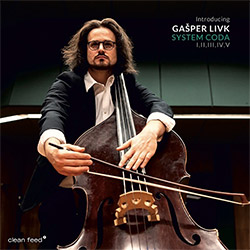
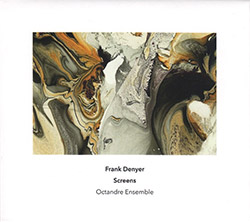
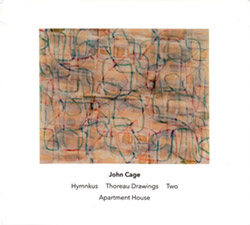
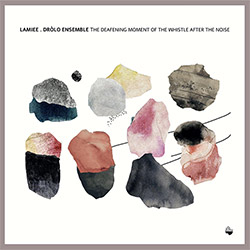
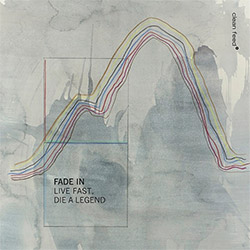
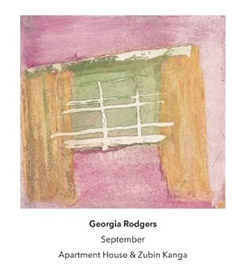
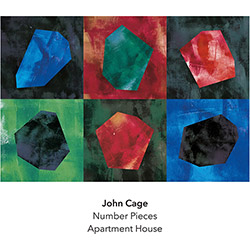
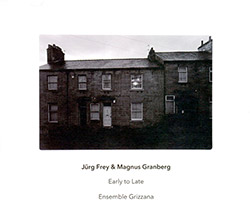
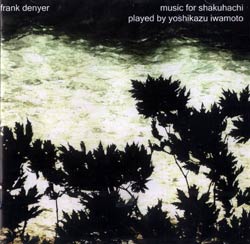
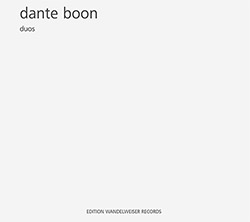
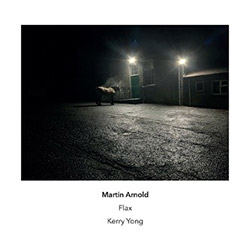
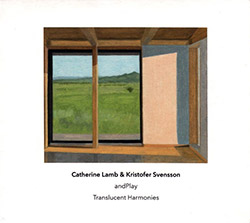
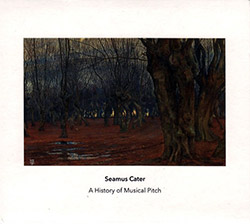
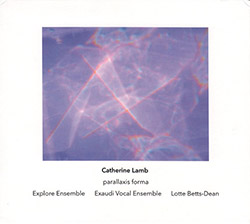
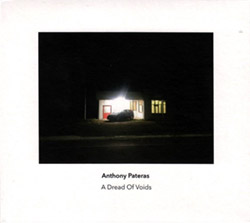
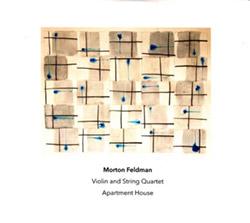
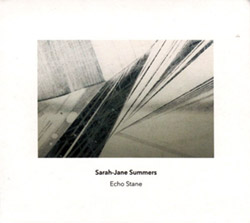
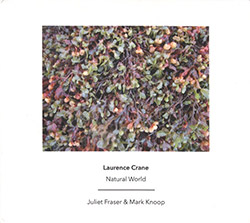
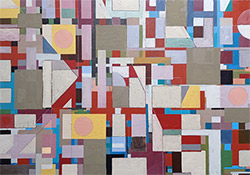
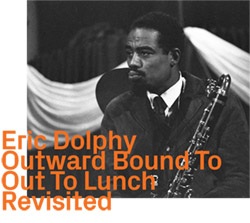
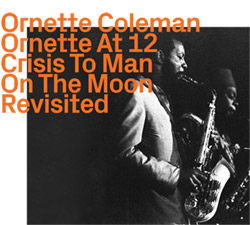
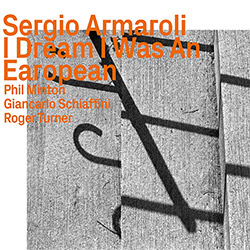
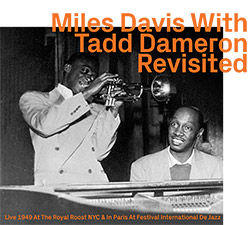
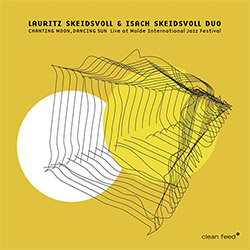
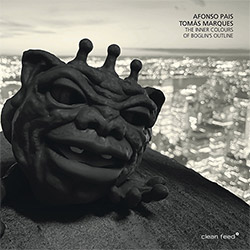
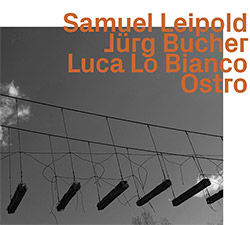

![HobbyHouse (Mia Dyberg / Axel Filip): HobbyHouse [CD + DOWNLOAD]](https://www.teuthida.com/productImages/misc4/36944.jpg)
![Mines, Kelsey / Erin Rogers: Scratching At The Surface [CD + DOWNLOAD]](https://www.teuthida.com/productImages/misc4/36945.jpg)
![Nebbia, Camila (feat/ Marilyn Crispell / Lesley Mok): A Reflection Distorts Over Water [CD + DOWNLOAD]](https://www.teuthida.com/productImages/misc4/36946.jpg)
![Vanheerentals, Adia: Taking Place [CD + DOWNLOAD]](https://www.teuthida.com/productImages/misc4/36947.jpg)
![Mines, Kelsey / Vinny Golia: Collusion and Collaboration [CD + DOWNLOAD]](https://www.teuthida.com/productImages/misc4/36948.jpg)
![Parkins, Zeena: Lament For The Maker [CD + DOWNLOAD]](https://www.teuthida.com/productImages/misc4/36949.jpg)
![Evans, Peter / Mike Pride : A Window, Basically [CD + DOWNLOAD]](https://www.teuthida.com/productImages/misc4/36950.jpg)
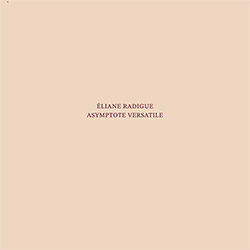
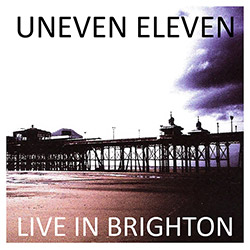
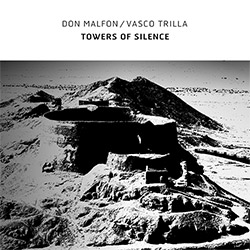
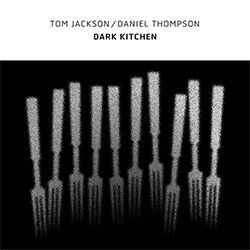
![Frey, Jurg : Composer, Alone [3 CDs]](https://www.teuthida.com/productImages/misc4/36927.jpg)
![Belorukov, Ilia / Alex Riva: Wrestling For Futility [CASSETTE w/DOWNLOAD]](https://www.teuthida.com/productImages/misc4/36994.jpg)
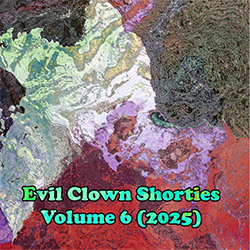
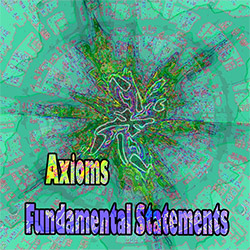
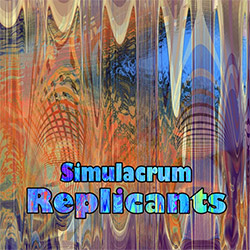
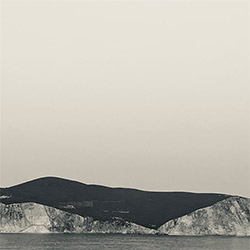
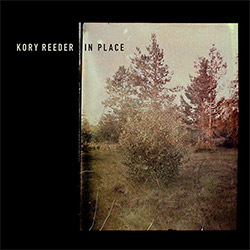
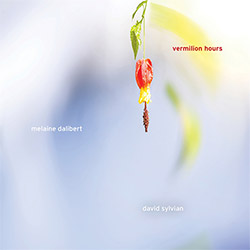
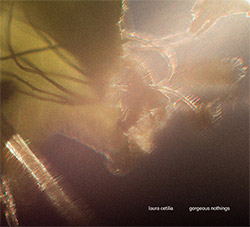
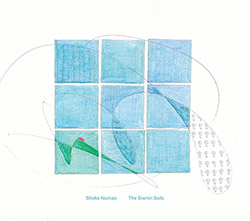

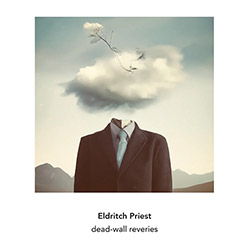
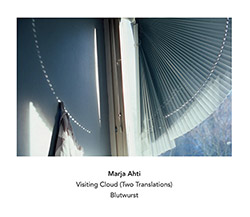
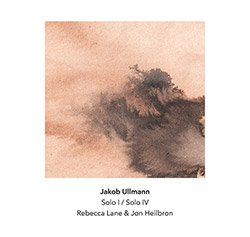
![Agnel, Sophie: Learning [VINYL]](https://www.teuthida.com/productImages/misc4/36841.jpg)
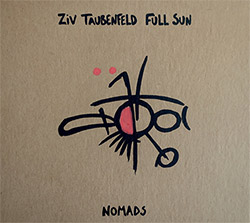
![Monaco, Amanda (w/ Michael Attias / Sean Conly / Satoshi Takeishi) : Deathblow [VINYL+ DOWNLOAD]](https://www.teuthida.com/productImages/misc4/36956.jpg)
![Frey, Jurg with ensemble]h[iatus: Je Laisse A La Nuit Son Poids D](https://www.teuthida.com/productImages/misc4/36988.jpg)
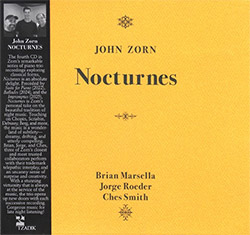
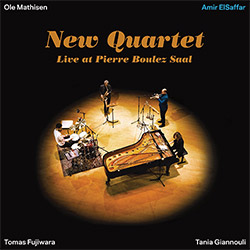
![ElSaffar, Amir / New Quartet : Live at Pierre Boulez Saal [VINYL]](https://www.teuthida.com/productImages/misc4/36830.jpg)

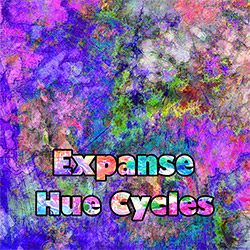
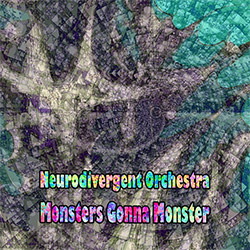

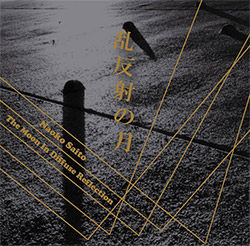
![Musicworks Magazine: #152 Fall 25 [MAGAZINE + CD]](https://www.teuthida.com/productImages/misc4/37004.jpg)
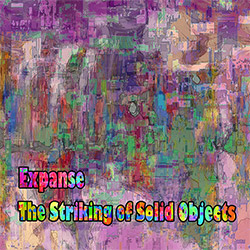

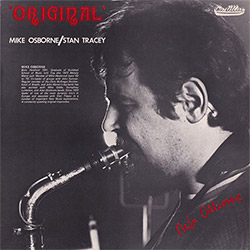
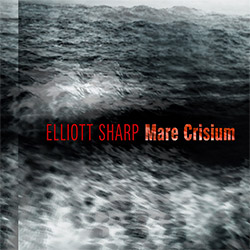
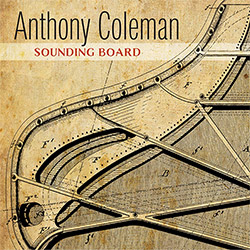
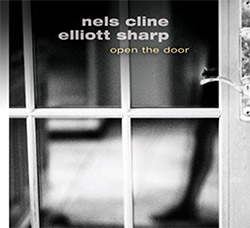
![[ahmed] (Thomas / Grip / Gerbal / Wright): Sama](https://www.teuthida.com/productImages/misc4/36976.jpg)
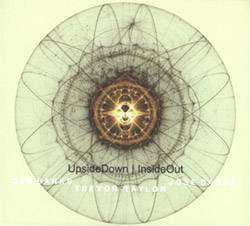
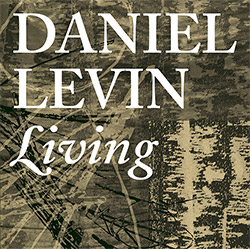
![Cleaver, Gerald / Brandon Lopez / Hprizm: In The Wilderness [COLOR VINYL]](https://www.teuthida.com/productImages/misc4/33060.jpg)
![McPhee, Joe : Defiant Jazz: a Joe McPhee Taster [VINYL]](https://www.teuthida.com/productImages/misc4/36859.jpg)
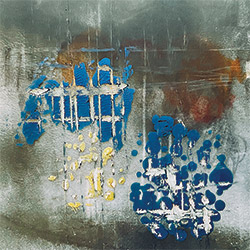
![Mateen, Sabir / Patrick Holmes / Federico Ughi : Survival Situation [LTD VINYL LP + DOWNLOAD]](https://www.teuthida.com/productImages/misc4/29891.jpg)
![Tucker, Dave / Pat Thomas / Thurston Moore / Mark Sanders: Educated Guess Vol. 1 [COLORED VINYL]](https://www.teuthida.com/productImages/misc4/30183.jpg)
![Sarian, Michael / Matthew Putman: A Lifeboat (Part I) [COLORED VINYL]](https://www.teuthida.com/productImages/misc4/30426.jpg)
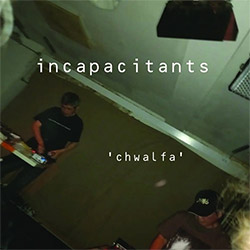
![Genthon, Anouck / Lionel Marchetti: Suite Blanche [2 CDs]](https://www.teuthida.com/productImages/misc4/36642.jpg)
![Toeplitz, Kasper T.: Erosions Programmees [CD + BOOKLET]](https://www.teuthida.com/productImages/misc4/36639.jpg)
![Gate, The : Amost Live [CASSETTE + MAGAZINE]](https://www.teuthida.com/productImages/misc4/36836.jpg)
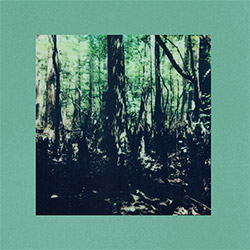

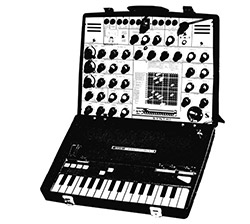
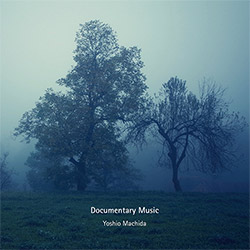
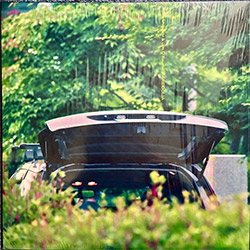
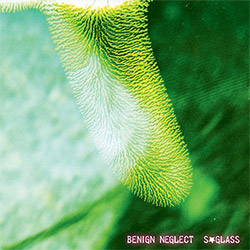
![A Magic Whistle: The Solar Cell [VINYL]](https://www.teuthida.com/productImages/misc4/36658.jpg)
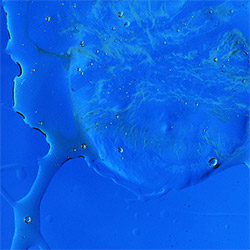
![McGee, Hal: Columbus Expedition [Cassette w/ Download]](https://www.teuthida.com/productImages/misc4/36650.jpg)
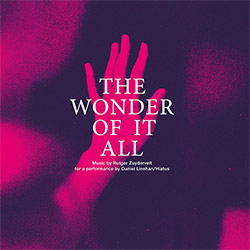
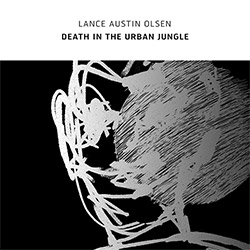
![Jaeger, Kassel: Fernweh [VINYL 2 LPs]](https://www.teuthida.com/productImages/misc4/36541.jpg)

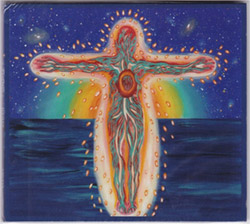
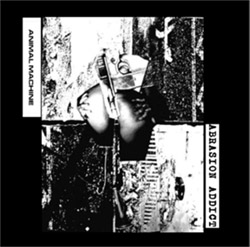


![+DOG+: The Light Of Our Lives [2 CDs]](https://www.teuthida.com/productImages/misc4/36009.jpg)
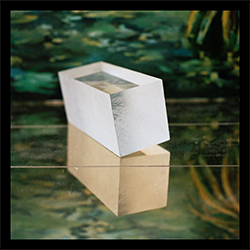

![Eternities: Rides Again [CASSETTE]](https://www.teuthida.com/productImages/misc4/36247.jpg)

![Lopez, Francisco: Untitled (2021-2022) [2 CDs]](https://www.teuthida.com/productImages/misc4/36438.jpg)

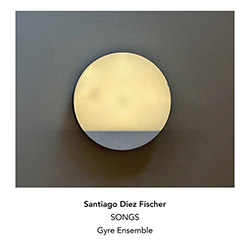
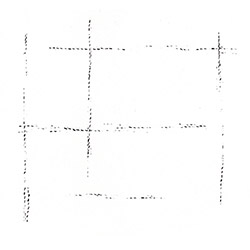
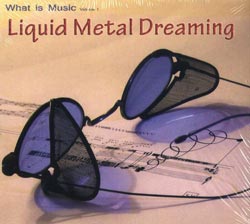

![Pisaro-Liu, Michael: Within (2) / Appearance (2) [2 CDs]](https://www.teuthida.com/productImages/misc4/36831.jpg)

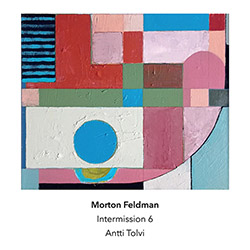
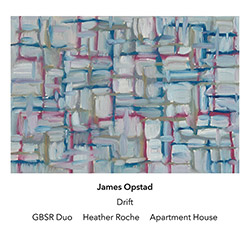
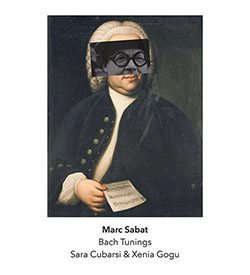
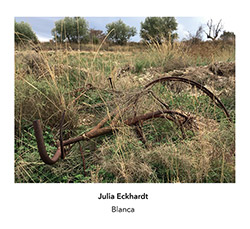

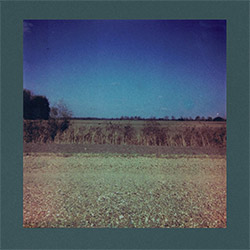
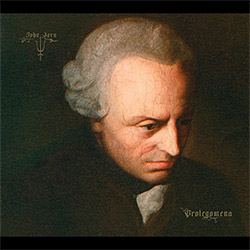
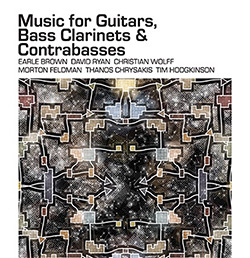
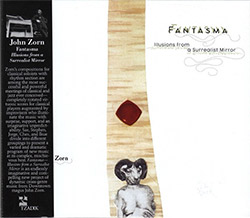
![Musicworks Magazine: #151 Summer 25 [MAGAZINE + CD]](https://www.teuthida.com/productImages/misc4/36559.jpg)

![Brown, Dan / Dan Reynolds: Live At The Grange Hall [unauthorized][CASSETTE]](https://www.teuthida.com/productImages/misc4/36245.jpg)


![Zorn, John: The Song of Songs [CD + CD BOOK]](https://www.teuthida.com/productImages/misc4/36923.jpg)
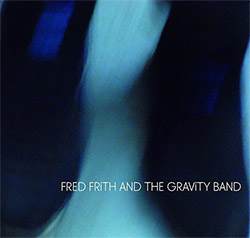
![Coultrain: Mundus [COLORED VINYL]](https://www.teuthida.com/productImages/misc4/33056.jpg)
![Hprizm: Signs Remixed [COLORED VINYL]](https://www.teuthida.com/productImages/misc4/30635.jpg)
![Halls Of the Machine: All Tribal Dignitaries [CASSETTE w/ DOWNLOAD]](https://www.teuthida.com/productImages/misc4/36134.jpg)
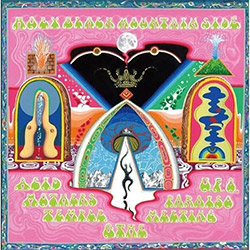
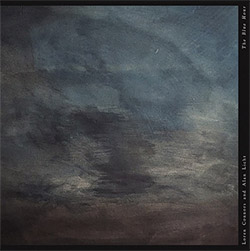
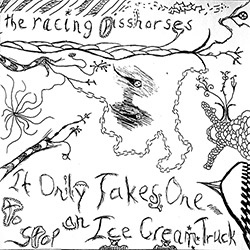
![Koenjihyakkei: Live at Club Goodman [2 CDs]](https://www.teuthida.com/productImages/misc4/36111.jpg)

![Sorry For Laughing (G. Whitlow / M. Bates / Dave-Id / E. Ka-Spel): Rain Flowers [2 CDS]](https://www.teuthida.com/productImages/misc4/35985.jpg)

![Rolando, Tommaso / Andy Moor : Biscotti [CASSETTE w/ DOWNLOADS]](https://www.teuthida.com/productImages/misc4/36106.jpg)


![Electric Bird Noise / Derek Roddy: 8-10-22 [CD EP]](https://www.teuthida.com/productImages/misc4/35970.jpg)








![Elephant9 : Mythical River [VINYL]](https://www.teuthida.com/productImages/misc4/34624.jpg)



![Elephant9 with Terje Rypdal: Catching Fire [VINYL 2 LPs]](https://www.teuthida.com/productImages/misc4/35355.jpg)
![Coley, Byron: Dating Tips for Touring Bands [VINYL]](https://www.teuthida.com/productImages/misc4/17906.jpg)

![Lost Kisses: My Life is Sad & Funny [DVD]](https://www.teuthida.com/productImages/misc4/lostKissesDVD.jpg)